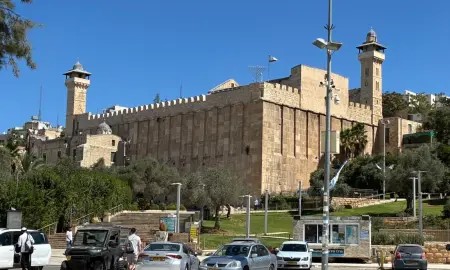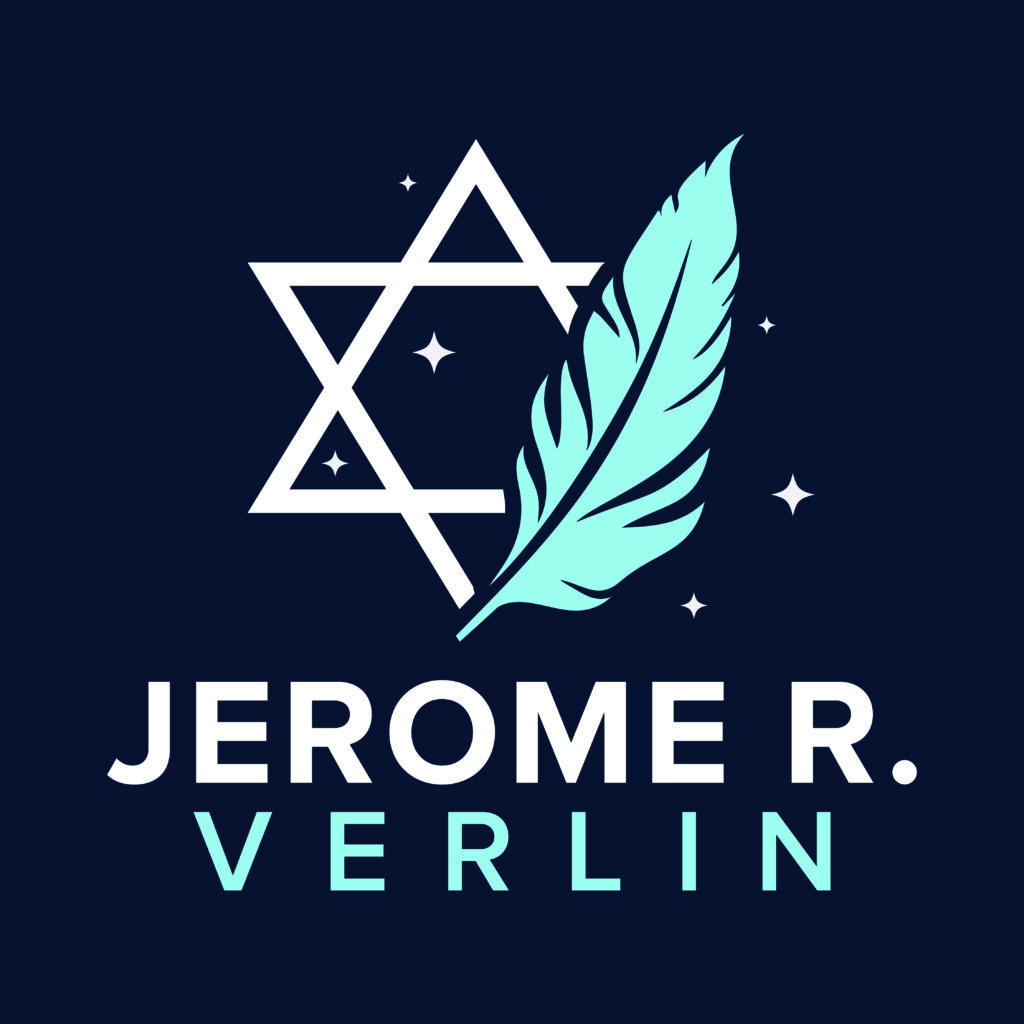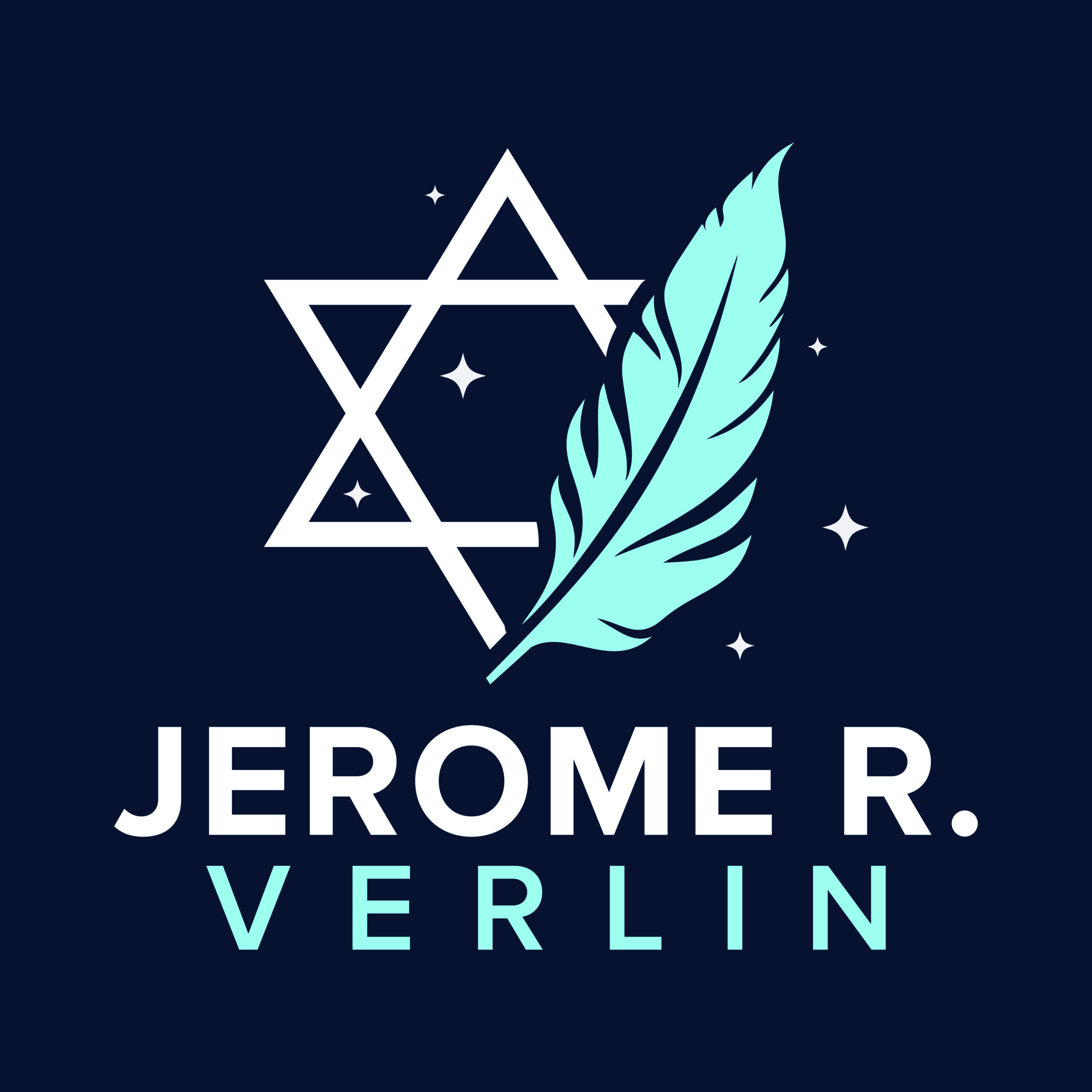A visit to King David’s first capital
September 12, 2025

Michal and I again ventured into Judea and Samaria, this time to visit the Jewish heritage site dating all the way back to Abraham’s entrance to the Land of Israel: the Cave of the Patriarchs and Matriarchs (Machpelah) in Hebron. Our tour was sponsored by one of several pro-Zionist NGOs that we support. Im Tirtzu is the largest Zionist movement in Israel. Its mission is to strengthen and promote the values of Zionism in Israeli society and the renewal of Zionist discourse, thought and ideology in Israeli society. Im Tirtzu emphasizes training future generations for national leadership and support of Zionism.
The Cave of Machpelah is featured in the Book of Genesis. Abraham had followed God’s instructions and had left his home in today’s Iraq, traveling north, then east, then south to the land of Canaan. There, God had promised Abraham that the Land of Israel would be established, a land of milk and honey. Eventually Abraham, by now a wealthy chieftain with many flocks and a large retinue of shepherds, women and children, was a significant personage. Around 1,700 BCE, at age 127 Abraham’s wife Sarah had died in Kiryat Arba, near Hebron. Abraham wanted to purchase an appropriate burial cave there for her, and eventually for himself and their descendants.
“Abraham specifically requests [to purchase] the Cave of Machpelah, which belongs to Ephron the Hittite, located at the end of his field. Ephron offers the cave and the field to Abraham as a gift, but Abraham insists on paying the full price. Ephron sets the price at four hundred shekels of silver, a significant sum, which Abraham agrees to and weighs out in the presence of the Hittites, ensuring a legal and witnessed transaction.” [citing source]
It’s significant that Abraham insisted on purchasing the land, not accepting it as a gift (although that suggestion may have been just the usual Middle Eastern opening gambit for haggling over the price). Abraham wanted it to be known forevermore as the legal property of the Children of Israel. So Sarah was buried there and eventually Abraham himself, his son Isaac and his wife Rebekah. Abraham’s grandson, Jacob (later renamed Israel) and wife Leah were also interred there. (Jacob’s favored wife Rachel died during the long journey southward and is buried in her own tomb near Bethlehem.)
The site of the Machpelah Cave is in Hebron, which has enormous importance for Jews because it was King David’s first capital. The Bible states, “And it came to pass after this, that David inquired of God, saying: ‘Shall I go up into any of the cities of Judah?’ And God said unto him: ‘Go up.’ And David said: ‘Whither shall I go up?’ And He said: ‘Unto Hebron.’”- II Samuel 2:1.
This came about after the death of Israel’s troubled first king, Saul, who had initially loved David, the young shepherd who slew Goliath, but later feared that David would usurp Saul’s kingship from him. In any event, King Saul and his three sons were killed in battle with the Philistines and the very popular David assumed the throne. There were 12 separate Jewish tribes but he wished to link them. For that, King David desired a more centrally located capital than Hebron. After 7 years of warfare, he defeated the Canaanite King of Jebus and moved his capital to what became Jerusalem. This allowed him to bring all the Jewish tribes under his monarchy.
Fast forward nearly a thousand years to the reign of the Jewish king, Herod the Great, who enjoyed his status as a monarch because powerful Rome favored him as a faithful client-king. In the 1st century BCE, Herod might have been more accurately called Herod the Tyrant for his atrocious behavior. But, “Great” definitely fits him as one of the grandest builders of all time. Among his most monumental accomplishments are the magnificently rebuilt Second Temple in Jerusalem; the Masada summer fortress; Herodium, another fortress; Caesarea Maritima, a phenomenal port city on the Mediterranean; a vast system of aqueducts; the Jericho Winter Palace; and a magnificent structure over Hebron’s Cave of the Machpelah. What’s incredible about the Machpelah is that it is not only the second-holiest place in Judaism after the Temple Mount and its supporting Western Wall, but it is the world’s only public building that has stood totally intact for more than 2,000 years! And it’s currently used for the same purpose for which it was built so long ago by King Herod, a place of reverence and worship, albeit shared by two faiths.
While Hebron has been a city inhabited by Jews and others for thousands of years, a massacre of Jews there in 1929 resulted in the exclusion of Jews from Hebron until after Israel’s victory in the Six Day War of 1967. Hebron was one of the largest cities in Judea-Samaria and was inhabited solely by Arabs between 1929 and 1967. In 1968 fervently religious Jews built a tiny Jewish sector inside Hebron, next to the Machpelah Cave. In 1979 the larger Jewish community of Kiryat Arba was built adjacent to the Jewish Quarter of Hebron. To this day, the number of Jews living in Hebron only numbers in the 100s, although there is a long list of those who wish to be allowed to reside there.
Before describing how the Tomb is managed, I will answer those who wonder why in a city of hundreds of thousands of Arabs, a small number of Jews “insert” themselves. My answer is that this is analogous to Israel, a small country on a tiny portion (1/4 of 1%) of Arab-populated, Middle Eastern land. The tiny proportion of Jews in Hebron’s population is also analogous to Israel. Israel’s 7 million Jews are 1.4% of the Arab population of the Middle East (500+million). The numbers are tiny but the importance of the Land of Israel and its heritage cities of Jerusalem, Hebron, Tiberius, and Safed (Tzvat) is of utmost importance to the Jewish religion, just as Mecca and Medina are central to the Muslim faith.
Today the tomb is divided between Jewish and Muslim sectors and is used as a place of worship and gatherings. Inside are six large memorial markers for the three couples buried far below. It has special opening hours. “Isaac’s Hall” is normally reserved for Muslim prayer but ten days a year, on Jewish special holidays, it’s reserved for Jewish worship.
Standing outside the tomb, looking at the walls of the building which are in excellent condition, one is reminded of the retaining wall of the Temple Mount, the Western Wall. But this ancient wall doesn’t have a plaza above it from which Arab mobs can hurl stones and explosive devices on Jews below.
After we finished our tour of the Tomb of the Patriarchs and Matriarchs we spent some time in the small, adjacent Jewish sector of Hebron. My favorite part of that excursion was a visit to Beit Hadassah, a historic building dating back 100 years which serves as a visitors center and houses the Hebron museum. Originally a hospital servicing Jewish and Arab residents, in 1929 Beit Hadassah was the site of some of the worst atrocities during the Arab pogroms. In 1986 the building was renovated and the museum was established. I learned a lot in the hour or so that we visited the various rooms of the museum, each room telling a particular story of Hebron’s history, from the Biblical era to today.
I’ve only presented the highlights of what was an educational experience in Hebron, enhancing our Zionist feelings towards our homeland. If you have been to Israel but didn’t visit Hebron, it’s a very worthwhile side trip. If you plan to come to Israel (after Hamas is defeated, for sure) allow time to visit Judea and Samaria, which includes the Old City of Jerusalem plus many other small cities and towns.
Remember, King David reigned in both Hebron and Jerusalem, 1,600 years before any Arabs entered the Land of Israel. Today, Hebron again has Jews living and worshipping there. Im Tirtzu has been an essential part of protecting and supporting Hebron’s Jewish community and many other sites in Judea and Samaria. Im Tirtzu brings university students from all over the country to see and experience the ancient city for themselves.
Those tours, and one like the Hebron tour Michal and I enjoyed, help combat the anti-Israel tours that are given in Hebron by radical-left NGOs, which have marked the city as a prime target in their propaganda war against Israel.


Leave a Reply